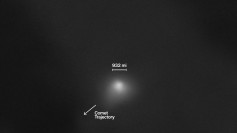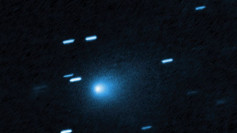The James Webb Space Telescope has made another huge stride forward in its quest to unravel the universe's mysteries.
Webb was launched in December, arrived at its station roughly 1 million miles from Earth in January, and has been hard at work preparing to undertake the science for which the $10 billion mission was created. The spacecraft achieved "fine phasing" on Mar. 11, the agency revealed on Wednesday, marking another important step in its preparations.
During the tests, the team found no problems and determined that Webb can observe light from distant objects and feed it into the observatory's science instruments.
Webb selected the star 2MASS J17554042+6551277 for the test. To demonstrate contrast, a red filter was utilized. Individual galaxies and stars can be seen behind the star in the image because Webb's observational skills are so sensitive.
"We have fully aligned and focused the telescope on a star, and the performance is beating specifications. We are excited about what this means for science," Ritva Keski-Kuha, deputy optical telescope element manager for Webb at NASA's Goddard Space Flight Center in Maryland, said in a NASA statement. "We now know we have built the right telescope."
While the first high-resolution images of the universe from Webb aren't expected until the end of June, new test images released by NASA on Wednesday demonstrate that Webb can capture light from a single star by using the various parts of its mirror as one gigantic 21-foot, 4-inch mirror.
Webb's observation power is aided by the telescope's enormous mirror, which spans 21 feet in diameter. The observatory's designers broke the golden surface into 18 individually adjustable hexagonal portions because a mirror of that size couldn't be deployed as is.
Engineers on the project have been fine-tuning the alignment of those segments for weeks in order to focus the universe for the enormous observatory. NASA noted that the process is not yet complete, but the team has completed the most difficult and nerve-racking tasks.
The team breathes a sigh of relief with the completion of fine phasing and all of the essential phases that preceded it.
"All of the sleepless nights I've had and the worries I've had, they're all behind us now," Thomas Zurbuchen, associate administrator for NASA's Science Mission Directorate in Washington, said. "There's still a mountain to climb, but we're way up that mountain now."
During the next few months, the crew will complete the last steps of the alignment process and confirm that all of the science equipment are calibrated.





